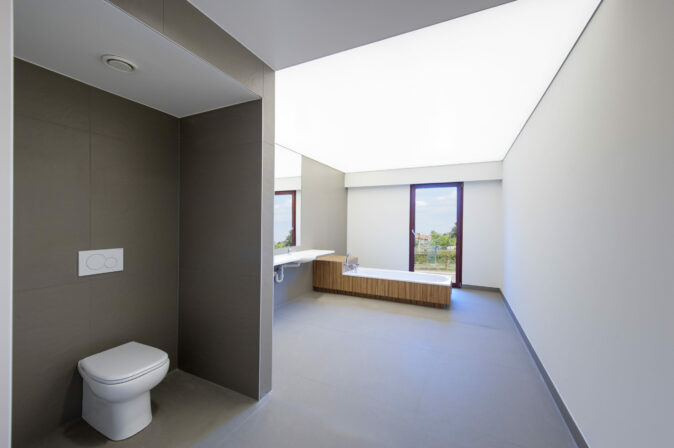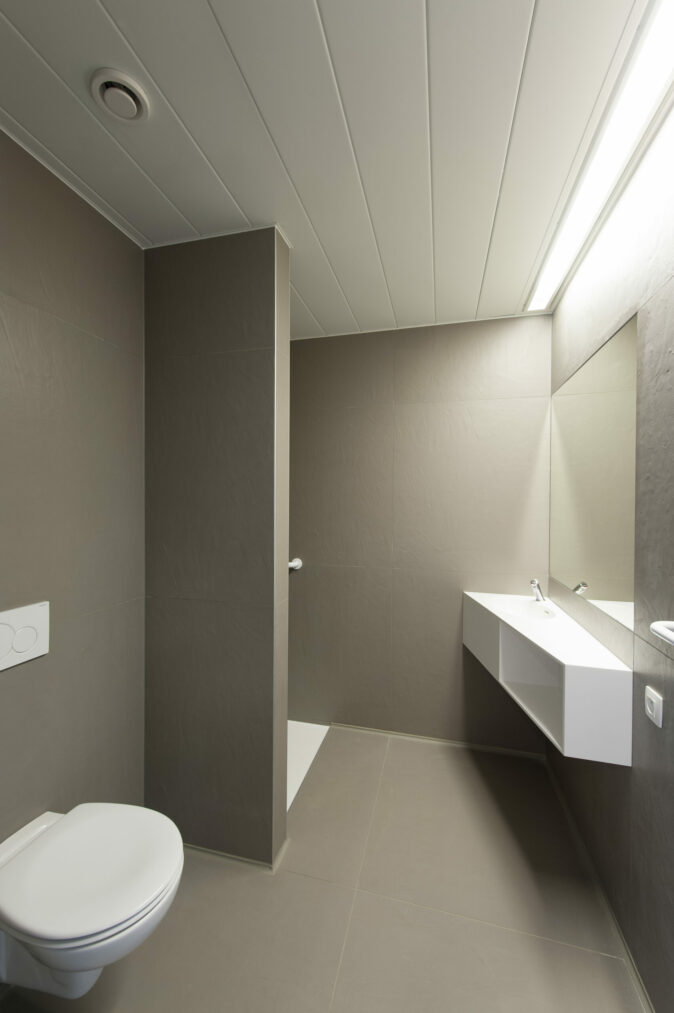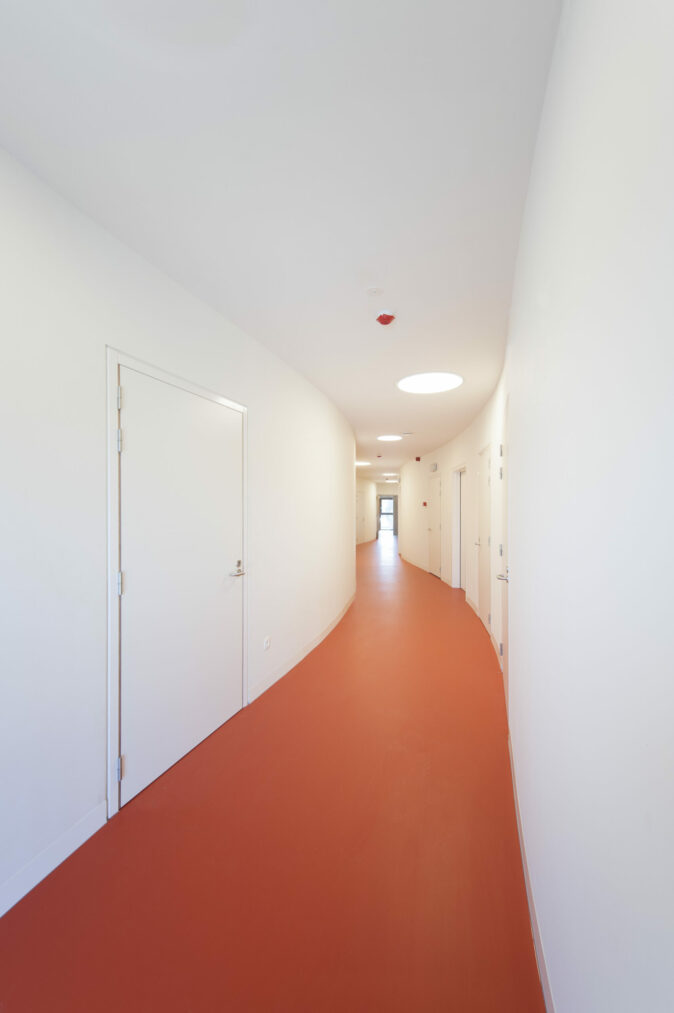new residential accommodation for ambulatory adults with autism spectrum disorder (50 accommodation units)
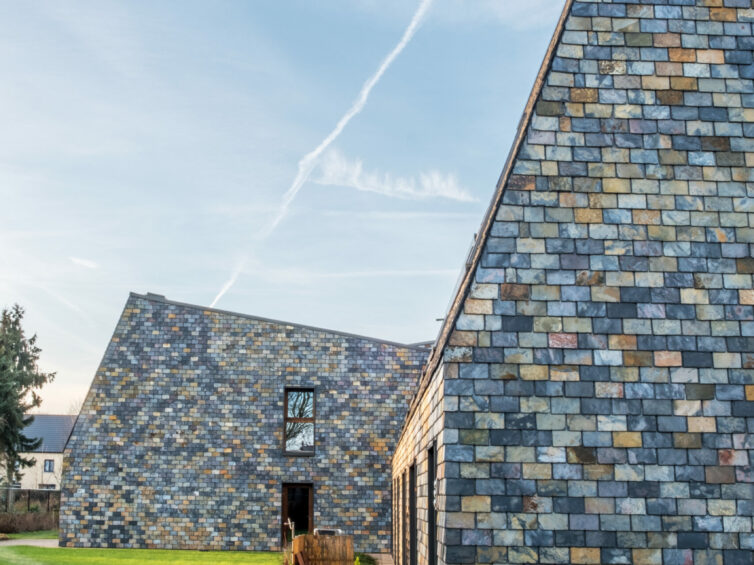
new residential accommodation for ambulatory adults with autism spectrum disorder (50 accommodation units)

Close to the Boekenbergpark and Antwerp airport, the care group Queen Fabiola Village No. 2 asbl has built two new residential groups in which people with autism can live independently with support. They house about twenty relatively autonomous adults and about thirty adults who need more extensive care.
Both complexes are located in normal residential areas. The buildings consist of staggered volumes. Each building provides space for two living groups: one on the ground floor and one on the upper floor.
Each group of dwellings consists of 5 accommodation units, which are individually highlighted by a variation in cornice heights. This variation is achieved by reversing the direction of the pitched roof, creating an articulation of the facades that is in keeping with the scale of the environment. The facades are clad in natural South African slate, carefully selected from a varied colour palette.
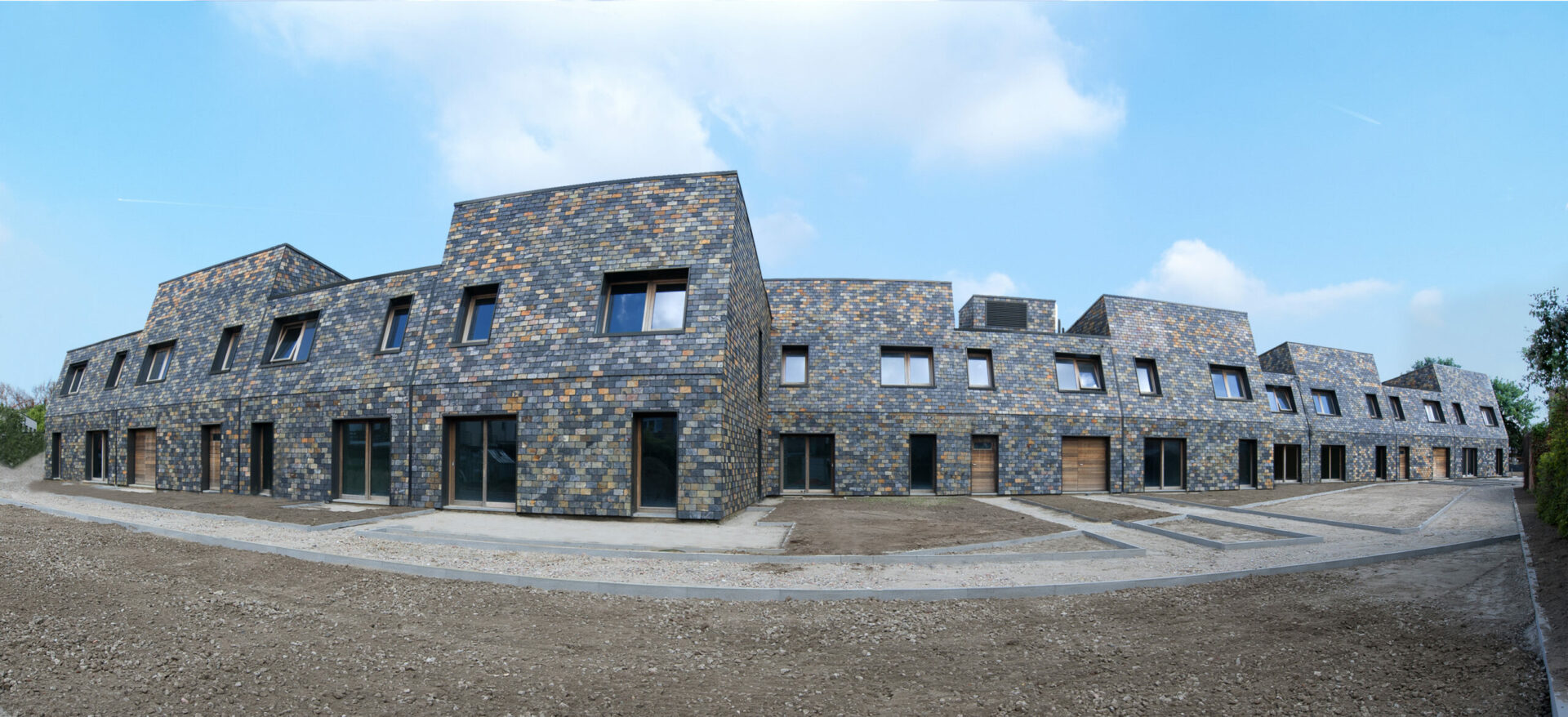
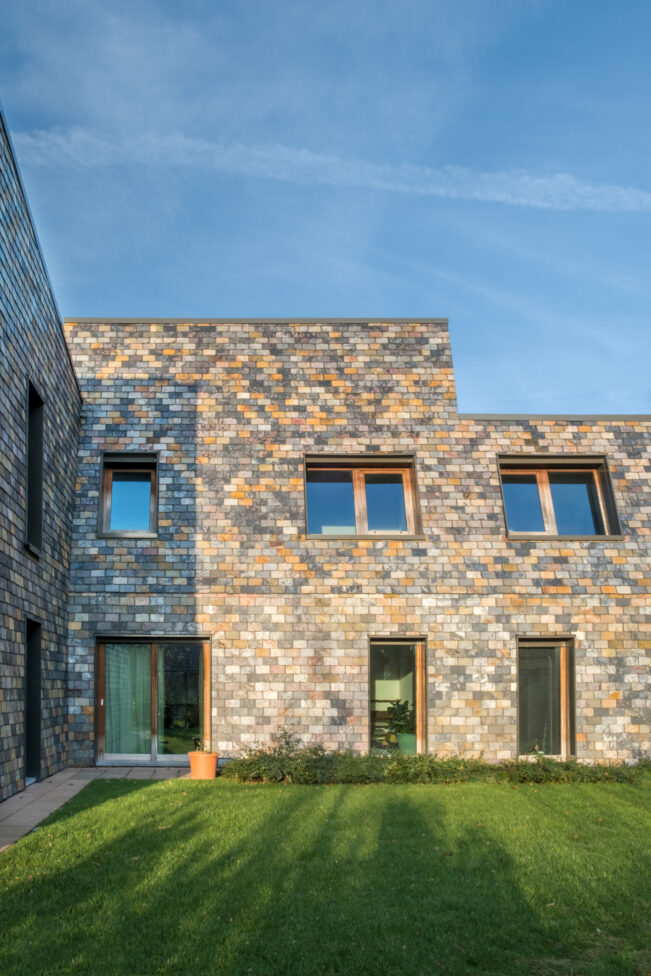
| program | new residential accommodation for ambulatory adults with autism spectrum disorder (50 accommodation units) |
| client | Village Reine Fabiola n° 2 ASBL |
| address | Tirolerhof: August Van Putlei 56, 2150 Borsbeek • Drakenhof: Mortselsesteenweg 55, 2100 Deurn |
| building type | care • live |
| status | completed |
| expertises | architectureinterior architectureproject managementhealth & safety coordinationprogramming |
| size | 4.471 m² |
| team | • client: Village Reine Fabiola n° 2 ASBL • special techniques engineering Botec • structural engineering: Fraeye & Partners • contractor: Bouwbedrijf van der Kinderen |
Autism can be described as an inability to filter out environmental stimuli. The design of their living environment must limit stimuli as much as possible. An exceptional challenge for designers, who are usually expected to do exactly the opposite. The result, especially viewed from the inside, is therefore very restrained.
What is remarkable in this case is the complete reversal from communal to individual living. By emphasising individual accommodation and reducing communal space to a minimum, a complete change in functioning has taken place. The carers, whose activities consisted mainly of managing the communal “conflict zone”, can now focus on individual support. Relatives feel more involved: they visit “their” resident, without having to sit with the others. There is much more family involvement with this type of housing.
The specific problems of autistic people, such as their sensitivity to stimuli, require a housing concept that provides sufficient individual space. The living groups consist of 5 residents with similar needs. In view of the great difference in individual needs, it is very important to have an infrastructure that enables differentiation in the housing concept. The accommodation was therefore equipped with movable walls, so that each studio can be configured in 3 different ways and adapted to the unique requirements of each resident. This adaptability is also reflected in the fixed furniture.
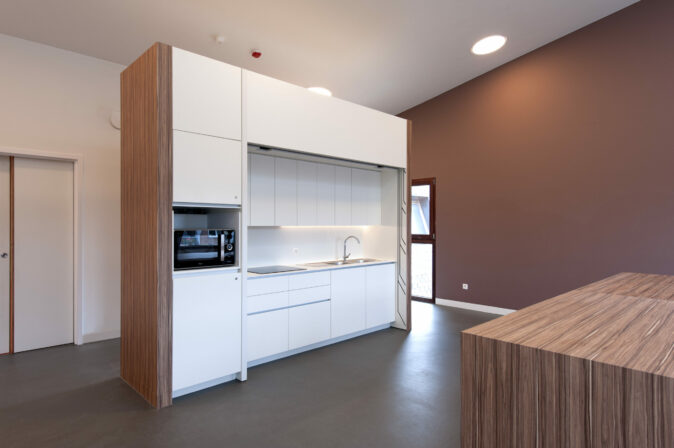
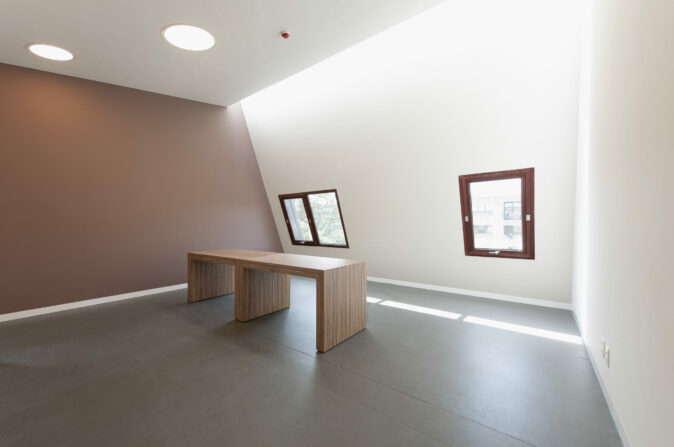
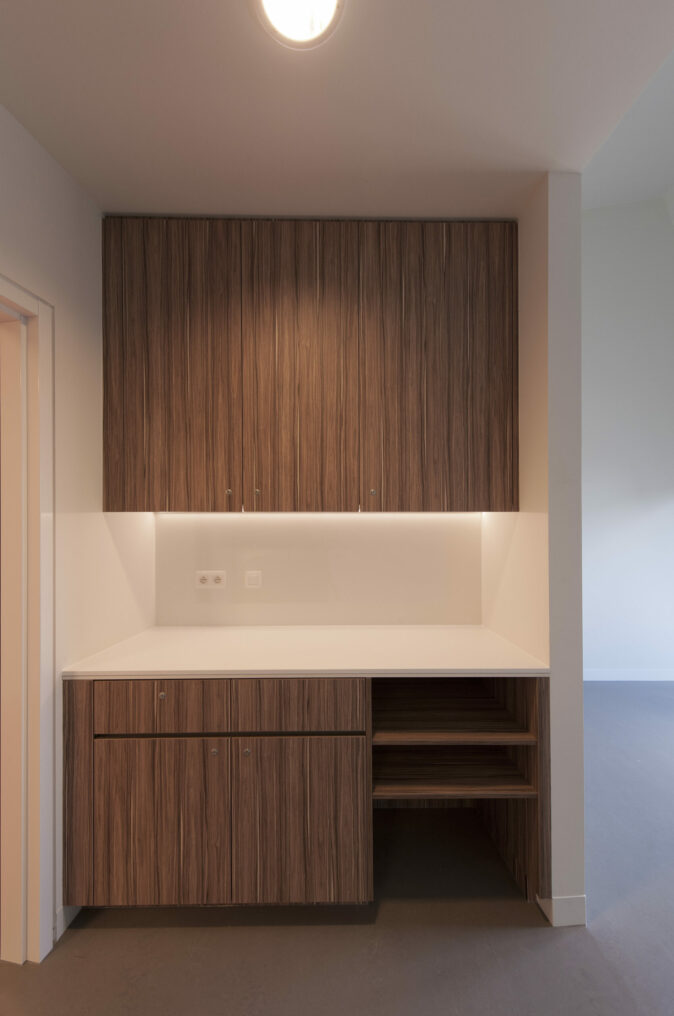
One of the most striking features of the interior is the slightly winding layout of the corridors. The choice of this undulating movement is intentional. This restful shape breaks with the image of the “institution” and offers the resident the possibility of discreetly exploring the environment, without having to confront the entire length of the corridor. In addition, the corridor is free of corners and hard elements that might cause injury or snagging. For similar reasons, underfloor heating was chosen instead of radiators, and steel door frames with hollow joints were installed.
In view of the residents’ often high sensitivity to stimuli, great attention was paid to the acoustic design. For this reason, the individual dwellings are completely acoustically isolated from each other and the walls are made of sand-lime brick. The acoustic separation was also extended to the technical installation: ventilation is strictly separated from one individual dwelling to another. The wall and floor finishes in the bathrooms are comparable, with large-format ceramic tiles. Small tiles might cause some residents to focus on them and count them regularly.
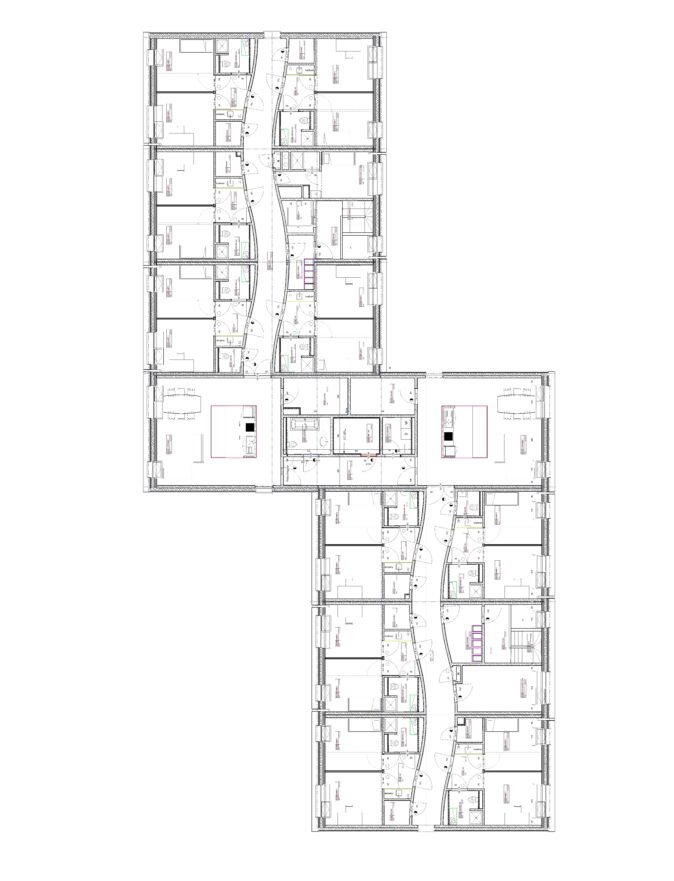
Tirolerhof Drakenhof
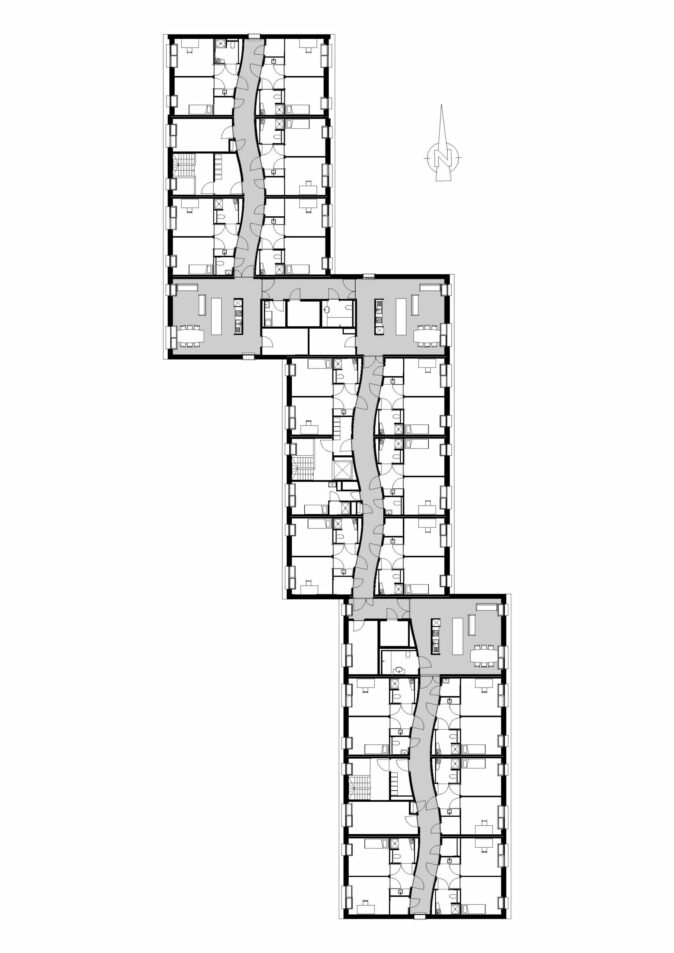
In anticipation of tighter insulation standards and rising energy prices, homes are already being insulated beyond current requirements. The use of green roofs also has a positive effect on heat management. In addition, they form an additional buffer for ambient noise and delay the drainage of rainwater.
Sustainability is also reflected in the language of form. The residential units are characterised by a contemporary interpretation of a recognisable design, of which the traditional pitched-roof dwelling forms the basis. The result is a series of individual dwellings that clearly have the characteristics of houses, but which are nevertheless perceived as a single unit. This language of form, combined with the creative application of a durable material such as natural slate on the façade, ensures that the building will retain its architectural value in the future.
It is not only the use of materials and design that influences the future value of the infrastructure: due to the switching principle, extensions can be implemented relatively easily.
• K value: 21
• E level: 69
